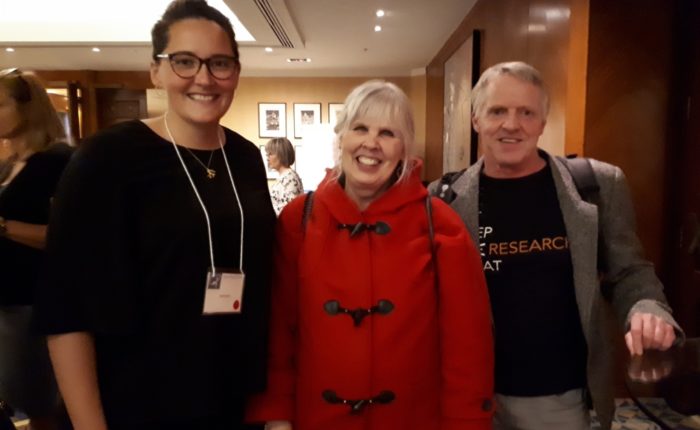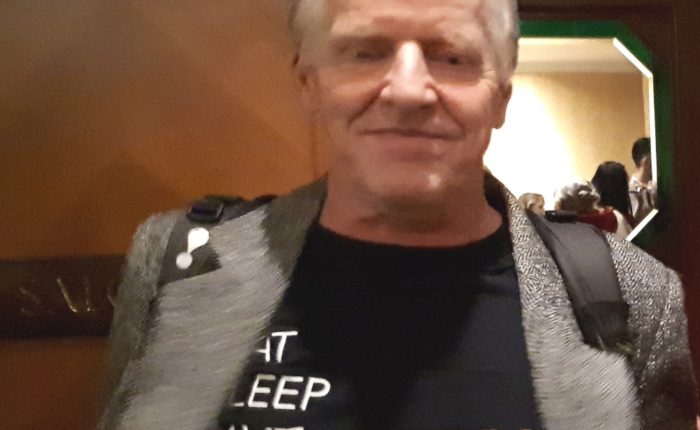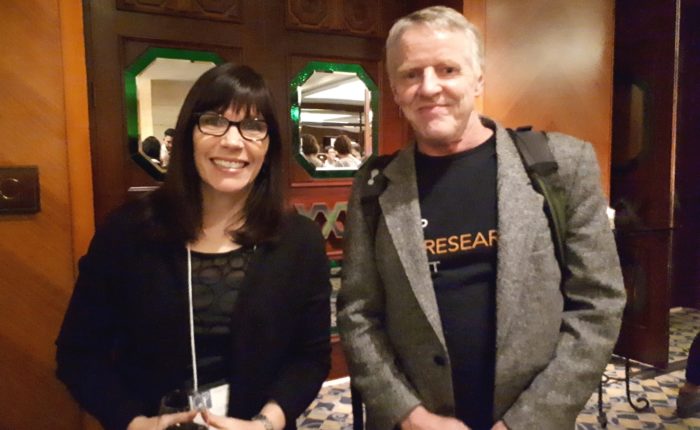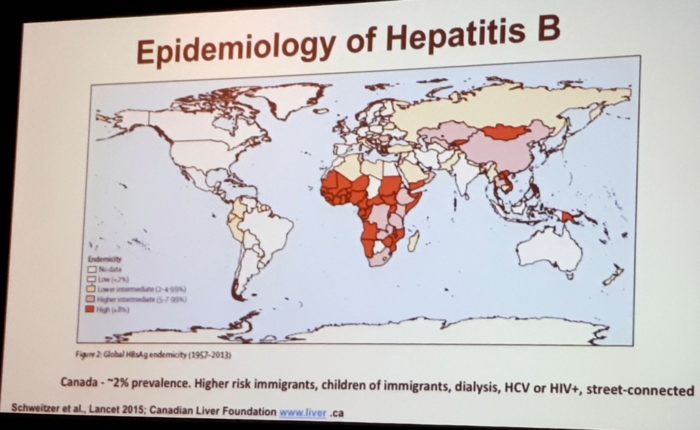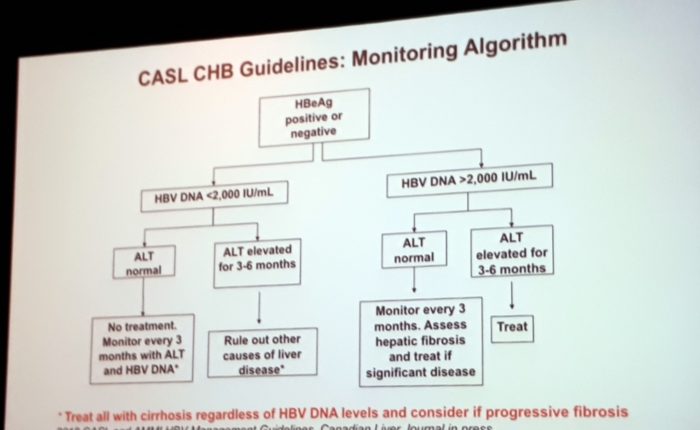This page is an archive. Its content may no longer be accurate and was last updated on the original publication date. It is intended for reference and as a historical record only. For hep C questions, call Help4Hep BC at 1-888-411-7578.
On October 19th, Volunteers Douglas Laird and Cheryl Reitz of HepCBC attended the exciting 7th Annual Liver Forum 2018 in Vancouver to hear the latest about research and best practices in the areas of hepatitis B (HBV) and C (HCV), Non-Alcoholic Fatty Liver Disease (NAFLD), and the sequelae of all three, including cirrhosis and its complications (hepatic encephalopathy [HE], ascites, autoimmune liver diseases, etc.). Participants included medical practitioners and researchers as well as representatives from pharmaceutical companies, patient organizations, private clinics, and government agencies.
Speakers were:
- Dr Alnoor Ramji of UBC, the forum’s organizer and chair (THANKS Dr Ramji!) was the first of the introductory speakers, speaking about how to treat each HCV genotype and adapt treatment according to degree of cirrhosis, decompensation, and DAA failure status. Dr Ramji was followed by
- Dr Naveed Janjua of BCCDC/UBC, who emphasized the use of the BC Hepatitis Cohort Study data, the importance of screening and linkage to care among subpopulations in the HCV Cascade of Care and the prevalence of HBV in different sub-populations in BC, followed by
- Dr Giada Sebastiani of McGill University, who summarized for us the epidemiology, diagnosis and staging, natural history, therapy and future therapeutic considerations of NAFLD, ending with
- Chairs Dr Edward Tam, Dr Carla Coffin, and Dr Hin Hin Ko, along with Nurses JoAnn Ford, Jeanette Feizi, and Lesley Gallagher, held three workshops presenting real-life cases which gave us a taste of how patients with HBV and HCV are assessed and treated by doctors in Canada today.
The afternoon included some really superb plenary sessions about:
- Canada’s newly-revised “Hepatitis B: Update on Guidelines: Nomenclature, Therapy, Prophylaxis, and Pregnancy” from the Cdn Assn for the Study of the Liver was formally presented for the first time, to this Liver Forum audience (Dr Carla Coffin of CASL)
- Fibrosis evaluation including invasive option (biopsy), serological options (APRI, FIB4, etc.) and imaging options (Fibroscan, ultrasound, Shear wave, etc.) (Dr Giada Sebastiani of McGill)
- Hepatitis-related drug-drug interactions, particularly interactions with HIV drugs, oral anticoagulants, and proton-pump inhibitors (Dr David Back of U of Liverpool and https://www.hep-druginteractions.org )
- Management and treatment of primary biliary cholangitis (PBC) and primary sclerosing cholangitis (PSC), and cirrhosis complications such as hepatitis encephalopathy and ascites (Drs Eric Yoshida and Hin Hin Ko of UBC)
- Special HCV treatment considerations in certain populations (Dr Brian Conway of Vancouver Infectious Diseases Centre)
- The need for HCV support groups and patient engagement (our friend Daryl Luster of Pacific Hep C Network), and
- Post-SVR monitoring/care including regression of fibrosis, risk of liver cancer and management of co-existent liver disease (Dr Edward Tam of LAIR Centre)
All in all the day was incredibly informative, and the interactions very collegial. Some interesting take-aways from our notes:
- We should add one more category to the Cascade of Care: “Engaged in post-SVR Care”
- The method used to distinguish between re-infection (with a new strain/sub-type) vs. a recurrence (same strain/subtype) of HCV used to be genotyping. This has been replaced by gene-sequencing, which is far more specific – being able to distinguish among strains within the same genotype
- Even non-cirrhotic HBV+ people have an elevated risk of liver cancer (HCC)
- Liver disease specialists now seem to support the concept that PCPs and NPs can treat many – if not most – cases of HCV, given some professional development and access to specialist care should complications arise
We will publish a link on this page to the official Liver Forum slides once they become available. For now, enjoy the HepCBC slideshow.
Click on the images in the lightbox to enlarge them and to view the accompanying descriptions.

